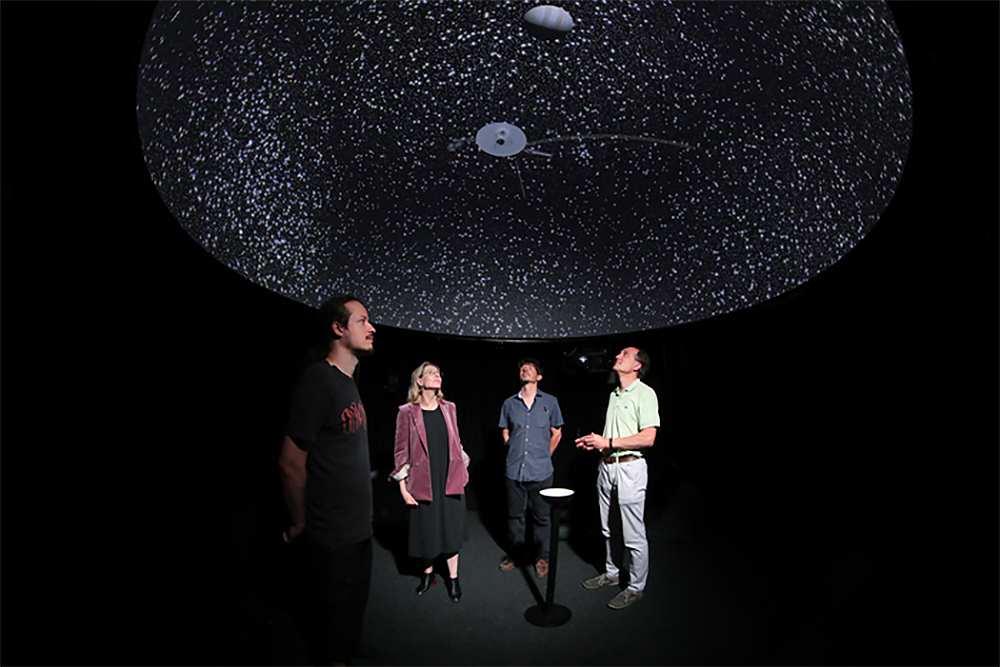As of 2021, less than 600 people have been to outer space. While science museums have sought to transport visitors through the cosmos via multimedia and exhibits, “Archaeology of Light” by the Swiss Federal Institute of Technology (EPFL) in Lausanne, Switzerland is offering the most detailed map of the galaxies to date, which audiences can view and tour in virtual reality (VR).
Unveiled in preliminary form in September at the Science Museum of Tokyo, the visualization was developed by EPFL’s Laboratory of Astrophysics (LASTRO), created with open-source software, Virtual Reality Universe Project (VIRUP), and builds in real-time on contemporary cosmological data. A versatile framework, it can be adapted for various VR and immersive environments from full domes to half caves.
The narrator-led video educates viewers about the structure and organization of outer space, providing them an understanding of scalability throughout the universe, says EPFL scientist, Dr. Yves Revaz. “For the majority of people, this is something extremely difficult to understand because we’re biased by terrestrial life on the Earth,” he tells Jing Culture & Commerce. “We wanted to teach people about different scales to let them understand what the galaxy is with respect to a star or a planet, how galaxies are distributed, and so forth.”
“Archaeology of Light” was created by rendering terabytes of astrophysical data into an immersive visual environment. But even prior to this project, EPFL has utilized virtual imagery to visualize computing data they gathered for the past 20 years, according to Revaz. In 2015, EPFL recognized the opportunities that VR technology presented. “We said okay, maybe we can benefit from this emerging technology to create an environment in which we can immerse people instead of looking just at a sterile image or movie,” he adds.

A malleable framework, the video can be adapted for various VR environments including full domes and half caves. Image: Alain Herzog / EPFL
After 18 months of global lockdowns, immersion via VR has grown in popularity among both cultural organizations and audiences who are seeking unique and escapist experiences. EPFL itself hosted a Virtual Space Tour over the summer, which saw “Archaeology of Light” as well as the VR escape game “Tranquility Base” make its way from Tokyo to Dubai. It will next be showcased at Cosmos Archaeology: Explorations in Space and Time, an exhibition at the EPFL Pavilions opening on April 21, 2022.
But as with any post-COVID project, “Archaeology of Light” can also be experienced remotely. The short video can be viewed for free in 2D, in stereo 180-degrees, and in 360-degrees on YouTube. For the majority of viewers, the video offered a highly educational experience, according to Revaz, noting that nearly 20,000 people have watched it online. “Most comments say, ‘Wow, it’s fantastic,’” he says, “or ‘I didn’t realize the universe that was so big.’”



